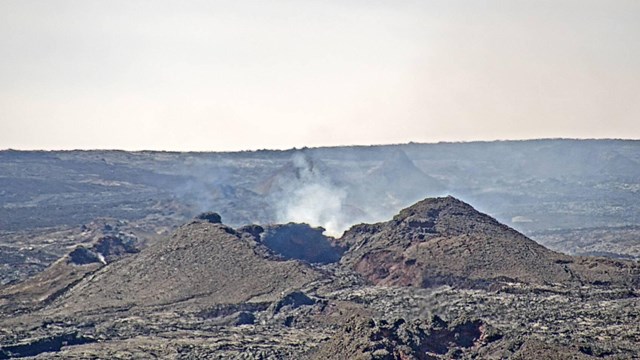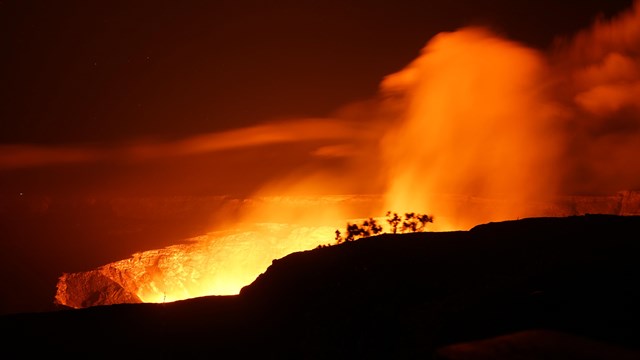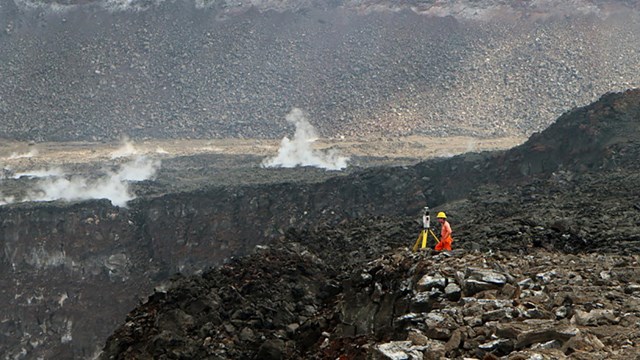|
Visit our keyboard shortcuts docs for details
Kīlauea Volcano began erupting on December 20, 2020, at about 9:30 p.m. HST in Halema‘uma‘u crater. The last activity on the lava lake surface was observed on May 23, 2021. 
After 5 months of activity, a decrease in effusion indicated that the eruption in Halema‘uma‘u at the summit of Kīlauea was going to pause. HVO field crews did not observe any signs of lava lake activity on May 25, and reported no signs of active surface lava. The next day Kīlauea was no longer erupting. The crusted-over lava lake was last measured at 229 m (751 ft) deep and was stagnant across its surface. Transition From a Water Lake to Lava Lake in Halemaʻumaʻu 

Left image
Right image

Webcams
Get a live look inside the park, courtesy of USGS Hawaiian Volcano Observatory. 
September 2021-2022 Summit Eruption
The 300-acre lava lake provided spectacular views for park visitors. 
What's Going On With The Volcanoes?
Get the latest update on volcanic activity.
From lava to water and back again. Learn about three remarkable changes at Halemaʻumaʻu crater.
|
Last updated: December 27, 2022
